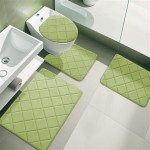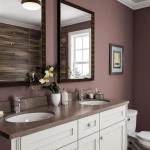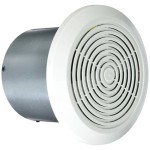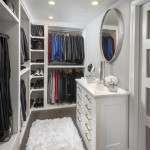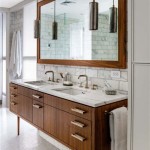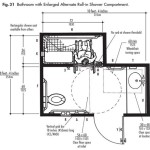Recessed Lighting Placement in Bathrooms
Incorporating recessed lighting into your bathroom design can significantly enhance the ambiance and functionality of the space. Whether you're planning a complete renovation or simply looking to upgrade your existing lighting, strategic placement is key to achieve optimal results. Here's a comprehensive guide to ensure flawless recessed lighting placement in your bathroom:
Purpose and Area Considerations
Determine the purpose of the bathroom. Is it primarily used for tasks like grooming and bathing, or does it serve as a spa-like retreat? Lighting needs will vary depending on the intended use. Consider the size and layout of the bathroom. A small bathroom may require fewer fixtures, while a larger space will benefit from multiple recessed lights. Measure the room and create a layout to visualize the lighting scheme.
General Lighting
General lighting provides overall illumination throughout the bathroom. For a balanced distribution of light, space recessed lights evenly across the ceiling. Avoid placing them too close to the edges or corners, as this can create shadows and uneven lighting. In small bathrooms, a single centered light may suffice. In larger spaces, consider using a grid pattern with fixtures spaced 4-6 feet apart. This ensures ample light coverage without overwhelming the space.
Task Lighting
Task lighting focuses on specific areas where detailed work is performed, such as the mirror and vanity. For optimal illumination, place recessed lights directly above the mirror. Use multiple fixtures to create an even distribution of light on your face. In bathrooms with separate vanity areas, consider installing recessed lights above the counter to provide ample lighting for grooming and makeup application.
Accent Lighting
Accent lighting highlights architectural features or decorative elements within the bathroom. Use recessed lights to illuminate alcoves, niches, or artwork to create depth and visual interest. When using accent lighting, choose fixtures with adjustable beam angles to direct the light precisely. This can create dramatic effects and draw attention to specific areas.
Other Considerations
Depth and Trim: Recessed lights come in various depths and trim styles. Consider the thickness of your ceiling and the desired trim to ensure a flush or semi-flush installation. CCT and Wattage: Choose LED fixtures with an appropriate color temperature (CCT) to create the desired ambiance. Warmer CCTs (2700K-3000K) provide a cozy and inviting atmosphere, while cooler CCTs (4000K-5000K) offer a more invigorating and task-oriented light. Dimmer Compatibility: If desired, select recessed lights that are compatible with dimmers. This allows you to adjust the brightness level to suit your specific needs and create different moods in the bathroom.
Conclusion
By carefully considering the purpose, area, and specific needs of your bathroom, you can create a well-lit and functional space. Strategic placement of recessed lighting ensures ample general illumination, enhances task areas, and highlights decorative elements. With the guidance provided in this article, you can achieve a bathroom lighting scheme that transforms the ambiance and elevates your daily routine.

Bathroom Recessed Lighting Tips 1stoplighting

Bathroom Recessed Lights Calculator With Layout Size Calculation Methods

Bathroom Recessed Lights Calculator With Layout Size Calculation Methods

Brighten Up Your Space With Stylish Bathroom Recessed Lighting Darbylanefurniture Com

Bathroom Recessed Lighting Tips 1stoplighting

Bathroom Recessed Lights Calculator With Layout Size Calculation Methods

Tips On How To Layer Your Lighting In Bathroom

Bathroom Lighting Options One Week Bath

From Functional To Fantastic 15 Bathroom Recessed Lighting Ideas Lightopia

Potlight Layout Tips In The Bathroom Mr
